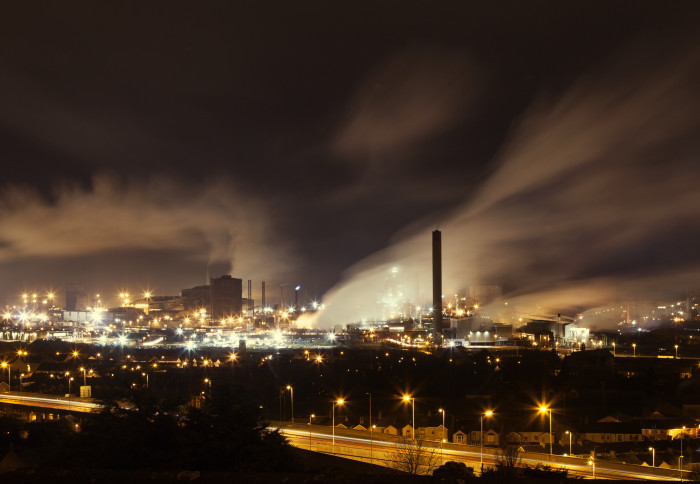Heat from mini nuclear reactors could help decarbonise UK industry

Small modular reactors could be located close to industrial clusters
Nuclear power stations could produce hydrogen, heat homes and decarbonise industry with surplus heat and electricity.
A new generation of nuclear reactors could help the UK cut carbon emissions by harnessing surplus energy to heat homes, produce hydrogen, and decarbonise industry, according to a new report by the Royal Society.
The Nuclear cogeneration: civil nuclear energy in a low-carbon future policy briefing, led by Imperial College London’s Professor Robin Grimes, sets out how future nuclear projects can complement renewables and help the UK meet its net-zero carbon emissions pledge by 2050.
At present, nuclear energy is only used in the UK to generate baseload electricity, but the design of planned future nuclear plants could be modified to provide a constant output of heat for other uses such as hydrogen production and district heating as well.
Cogeneration gives nuclear power the flexibility to function in an energy system where a growing proportion of electricity comes from intermittent renewables, allowing plants to switch from electricity generation to other applications when demand is being met by wind, solar, or other sources.
“This is a real opportunity for nuclear,” says Professor Grimes, Professor of Materials Physics and the report’s lead author. “What cogeneration gives us is options, and frankly, we need options when facing an uncertain future.”
Next-generation reactors
The report highlights small modular reactors (SMRs) as an area of particular interest. These are reactors producing 300Mw of energy or less, which can be built in factories and deployed in stages. This would allow plants to be tailored to the energy needs of regional or industrial clusters.
The next generation of SMRs – known as Advanced Modular Reactors (AMRs) – are expected to generate temperatures in excess of 600°C which are required by some of the hardest to decarbonise processes, such as chemical production. It could potentially be used in the steel making process to reduce the industry’s carbon footprint.
“It will have to be a staged process,” says Professor Grimes. “We’ve already begun the move to electrification – most clearly in cars. Then you can look at using some nuclear power to produce hydrogen with electrolysis, and for low-carbon district heating.
“The much more difficult decarbonisation, like the chemical industry, that’s where you need advanced modular reactors, because they provide very high temperature heat.
“We could demonstrate the feasibility of a high temperature AMR reactor by 2035, while SMRs could be on the grid by 2028. It would be a key component of meeting the UK’s 2050 target.”
Cogeneration applications

Previous nuclear projects have shown the benefits of locating industry alongside nuclear stations. The Wylfa Magnox station on Anglesey, until recently the intended site for a Hitachi-built nuclear station, provided cheap electricity for Anglesey Aluminium’s smelting operation until 2009.
Across the EU, around a quarter of industrial processes depend on high-temperature heat (above 400C), which could be generated by AMRs. Potential applications for this heat in the UK include the production of hydrogen and sustainable synthetic fuels such as ammonia, and direct air capture of carbon dioxide.
Lower temperature ‘waste’ haste, meanwhile, could be used to heat homes through district heating systems. Several countries already use nuclear cogeneration for district heating in colder climates, and in China, SMRs are being built solely to provide district heating.
Challenges of implementation
Demonstrating the efficiency of new reactors alongside consultation with local communities will be key to the expansion of UK nuclear generation, the report concludes. It notes that SMR’s simplified systems and designed-in safety features, in combination with their smaller scale, can reduce the hazard and risk of evacuation in the event of an accident.
Other outstanding issues include the ownership of reactors, the future demand for hydrogen and other cogeneration products at a regional, national and international level, and the cost of carbon and dependable power.
If the construction cost reductions for SMRs can be realised and the regulation and licencing processes streamlined, then the report notes the additional revenue benefits of cogeneration could be material for SMRs and for the future of nuclear generation in the UK.
Nuclear cogeneration: civil nuclear energy in a low-carbon future, published 7 October by the Royal Society.
Article text (excluding photos or graphics) © Imperial College London.
Photos and graphics subject to third party copyright used with permission or © Imperial College London.
Reporter
Conor McNally
The Grantham Institute for Climate Change